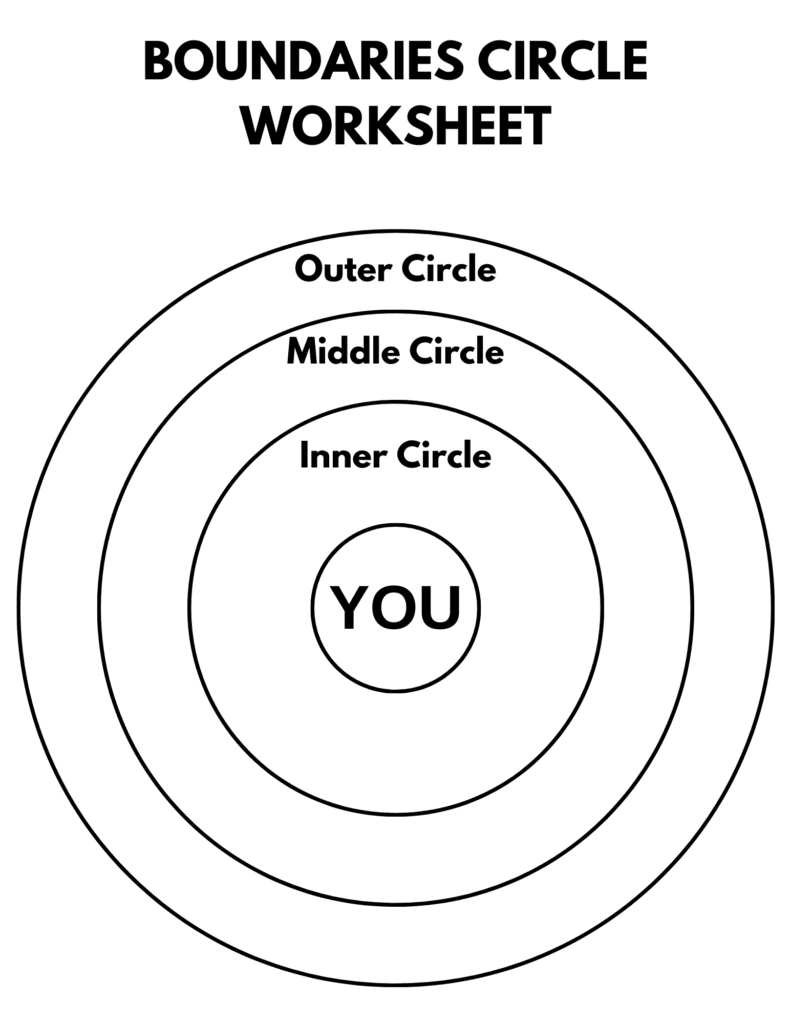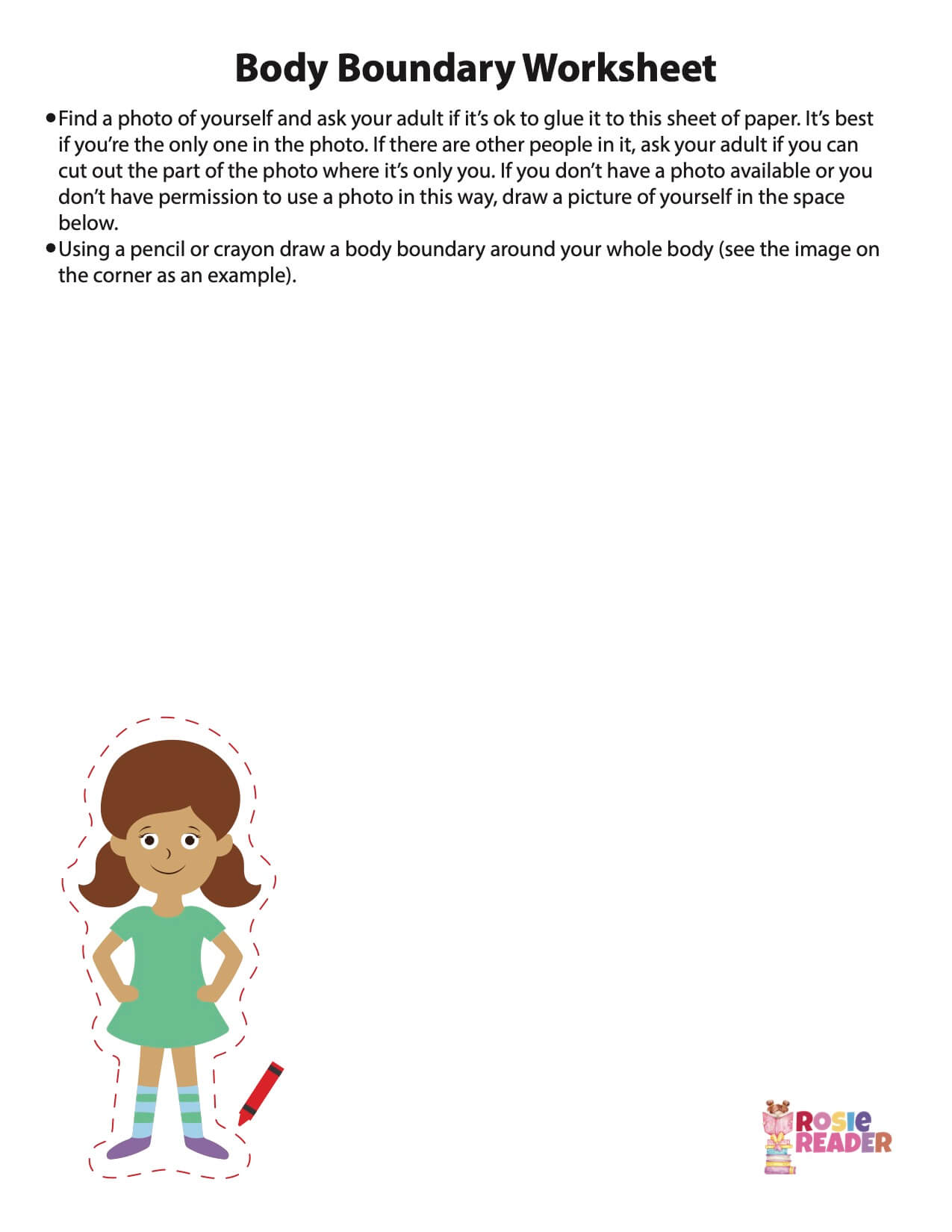Setting boundaries is an essential aspect of maintaining healthy relationships and promoting personal well-being. It allows individuals to establish and communicate their needs, limits, and expectations in various areas of life. In this article, we will explore the concept of boundaries, why they are important, and provide practical resources such as worksheets to help individuals develop healthy boundaries.
Understanding Boundaries
Boundaries refer to the invisible lines we draw to protect our physical and emotional space, values, and beliefs. They serve as a framework for how we interact with others and ourselves. Establishing boundaries helps create a sense of safety, allows for respectful communication, and contributes to maintaining healthy relationships.

The Importance of Healthy Boundaries
Having healthy boundaries is crucial for our overall well-being. It enables us to:
- Protect our physical and emotional health
- Prevent burnout and overwhelm
- Maintain self-respect and dignity
- Foster trust and intimacy in relationships
- Establish clear expectations and avoid misunderstandings
Types of Boundaries
Boundaries can be categorized into several types, including:
- Physical boundaries: These refer to personal space, touch preferences, and comfort levels.
- Emotional boundaries: These involve setting limits on the emotional energy we give and receive from others.
- Intellectual boundaries: These pertain to respecting others’ thoughts, opinions, and intellectual property.
- Material boundaries: These relate to personal belongings, finances, and sharing resources.
- Time boundaries: These involve managing and prioritizing time for ourselves and others.
- Social boundaries: These determine the level of interaction and engagement we have with different social circles.
Each individual may have different boundaries depending on their values, cultural background, and personal preferences. It is important to respect and communicate these boundaries in both personal and professional relationships.
Building Healthy Boundaries
Developing healthy boundaries requires self-awareness, reflection, and effective communication. Here are some strategies to help build strong boundaries:
Self-Reflection
Take the time to reflect on your personal values, needs, and limits. Consider what makes you feel comfortable or uncomfortable in different situations.
Identify Boundaries
Explore the various types of boundaries mentioned earlier and identify which ones are important to you. Determine what is acceptable and what is not.

Communicate Clearly
Express your boundaries assertively and respectfully. Use “I” statements to share your needs and expectations with others.
Practice Self-Care
Make self-care a priority in your daily routine. This includes setting aside time for relaxation, hobbies, and activities that replenish your energy.
Set Consequences
Establish consequences for when your boundaries are crossed. Communicate these consequences clearly to promote accountability and mutual respect.
Seek Support
Reach out to trusted friends, family members, or professionals who can provide guidance and support as you navigate boundary-setting.
Boundaries Worksheets and Resources
Worksheets can be valuable tools for understanding, evaluating, and strengthening boundaries. Here are some helpful resources:
1. Healthy Boundaries Worksheets For Adults - Worksheets Master

This resource provides a collection of worksheets specifically designed for adults to enhance their understanding of healthy boundaries.
2. Boundaries Circle Worksheet (PDF Download) – Ineffable Living

The Boundaries Circle Worksheet offers a visual representation of personal boundaries and can be a helpful tool for reflection and self-assessment.
3. Body Boundaries Worksheet – Rosie Reader

This worksheet is specifically designed for children ages 3 to 5 and helps them understand the concept of body boundaries and personal space.
4. Healthy-Boundaries-Worksheet-Should-Add-quotlist-2-Positive-Printable – Pinterest

Explore this printable worksheet to identify and reinforce positive boundaries that contribute to healthy relationships.
5. Lesson Relationship Boundaries Circle Worksheet – Online Daily Source

This resource provides a comprehensive lesson plan and worksheet to help individuals understand and discuss relationship boundaries.
6. Boundaries Circle Worksheets – Pinterest

These circle worksheets can be used to visualize and define personal boundaries in different areas of life.
7. Free Printable Boundaries Circle Worksheets for Students – Worksheet Zone

This resource offers free printable circle worksheets focused on boundaries, suitable for students of various ages.
8. Boundaries Exploration Worksheet – Pinterest

Explore this worksheet to delve deeper into the exploration of personal boundaries and their impact on relationships.
9. Printable Setting Boundaries Worksheet – Worksheet Now

This printable worksheet offers a step-by-step guide to help individuals set, communicate, and maintain healthy boundaries.
Remember, these worksheets serve as tools to assist individuals in their boundary-setting journey. It is important to approach them with an open mind and engage in self-reflection and self-care.
Incorporating Boundaries in Everyday Life
Once you have developed a clear understanding of your boundaries, the next step is to integrate them into your daily life. Here are some tips for incorporating boundaries:
1. Communicate Your Boundaries
Practice assertive communication by clearly expressing your boundaries to others. Use “I” statements to convey your needs and expectations.
2. Respect Others’ Boundaries
Just as you expect others to respect your boundaries, make sure to respect theirs. Listen actively and be mindful of their personal limits.
3. Practice Self-Care
Make self-care a priority in your routine. Set aside time for activities that rejuvenate and replenish your energy.
4. Learn to Say No
It is okay to say no when a request or situation goes against your boundaries. Prioritize your well-being and take control of your choices.
5. Seek Support and Guidance
If you are struggling to establish or maintain boundaries, consider reaching out to a therapist or counselor who can provide guidance and support.
6. Reflect and Reevaluate
Regularly reflect on your boundaries and evaluate if they are still aligned with your values and needs. Adjust them accordingly to promote personal growth and well-being.
Conclusion
Setting boundaries is a transformative practice that allows individuals to prioritize their well-being, maintain healthy relationships, and foster personal growth. It is a lifelong journey that requires self-reflection, effective communication, and continuous self-care. By utilizing resources such as worksheets and incorporating boundaries into our everyday lives, we can cultivate a sense of empowerment, respect, and balance in all areas of life.